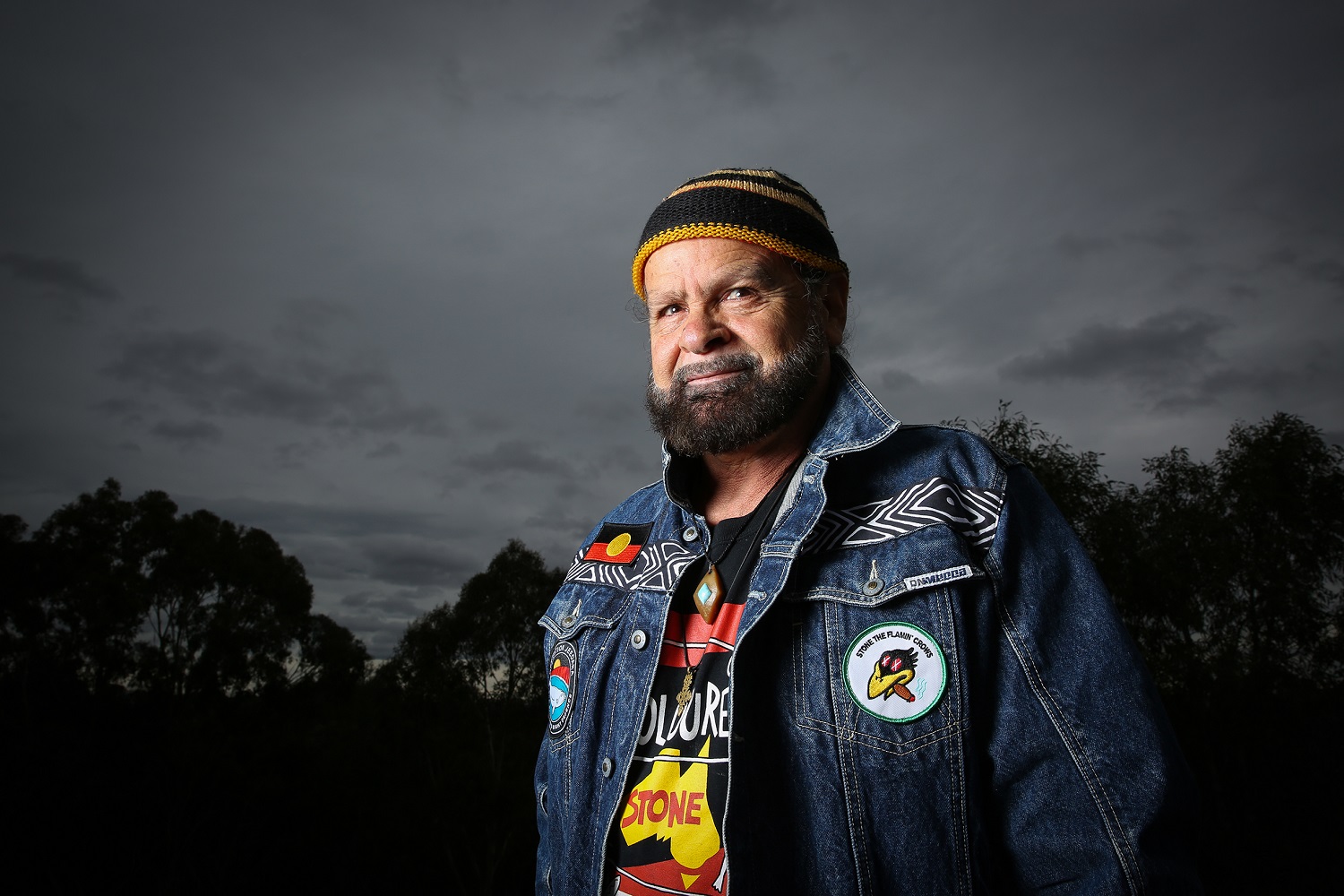“We’ve got a new album in the pipeline,” he says. “We tour a lot of festivals around Australia, we get a lot of phone calls. This year we got eight or nine, ten NAIDOC calls.”
Formed in 1977 in Koonibba, on the Nullarbor Plains, Coloured Stone have played to enormous international crowds, won countless awards and even knocked Michael Jackson off the number one spot in New Caledonia in 1984 with their single Black Boy. Yet, the working band have also played to just about every Indigenous community in Australia, despite how remote some may be. For Lawrie, there’s no difference.
“When I do a gig, if it’s out bush or somebody’s backyard birthday party, I treat gigs as any other gig. They’re all standout gigs. You’re playing the music and people are dancing and really enjoying it with their hearts and souls.”
Lawrie, an accomplished multi-instrumentalist, hears music in all things, and feels everyone is inherently musical. “It’s the sound of creation, the sound of all things. It’s natural like the wind blowing through the trees or the wind blowing through a whalebone. Music is made by the wind, created by the wind and it carries in the wind. Every human, we’ve all got that gift. If you’re driven and look for it, it’ll come to you.”
It’s precisely what has inspired Lawrie to continue making music all this time. “It never stops coming to me and I really love when it doesn’t stop because I get more inspiration. If you’re feeling bad about something, music can take away all that, it’s like standing in the rain or looking into the wind. It really helps you.”
His belief in nature as a healing force, and the necessity of our being in harmony with it, has made Lawrie one of Australia’s most recognisable activists. As an elder and song man of South Australia’s Mirning people, Lawrie only sees it as part of his job description.
“I’m pretty much suffering for land, trying to teach people how to respect the Earth. I was born to do that [and] I love doing it because it’s about educating people about life – living with nature and doing the right thing with nature. One day they’re going to wake up and say, ‘These activists aren’t bad after all because look what happened; all the forests disappeared, all the whales are dead, the water’s poisoned, we can’t drink water. Now, we can’t eat money.'”
Lawrie chuckles, his natural charisma belying the seriousness of his words. “If you can’t live in harmony with the earth and live in harmony with the people, you’re never going to live in harmony with man-made catastrophes or man-made poison on this planet. It’s as simple as that.”
As the figurehead of The Great Australian Bight Alliance’s Operation Jeedara, Lawrie saw the withdrawal of BP from its exploration permits in one of Australia’s most diverse and fragile sanctuaries. In collaboration with Sea Shepherd, Lawrie and the crew filmed “all the living creatures and marine life living in the ocean and living in those islands out there to prove to the government, this is what you’re going to destroy and going to kill.”
BP have a poor track record, with their 2010 spill in the Gulf of Mexico still very much at large and causing widespread environmental havoc. The Bight’s potential oil reserve is in both deeper, and rougher, seas. “They’re going to put a hole in there. They won’t able to control it. They won’t be able to put a cork in it, they’re not going to put some cement down there and block it, no way. It’s just crazy, madness – greed makes people crazy.”
It’s all the more impetus for Lawrie to continue his lifelong journey of healing through music. “This whole world has music floating around it,” he says. “It’s a musical world, you’ve got to catch it.”

